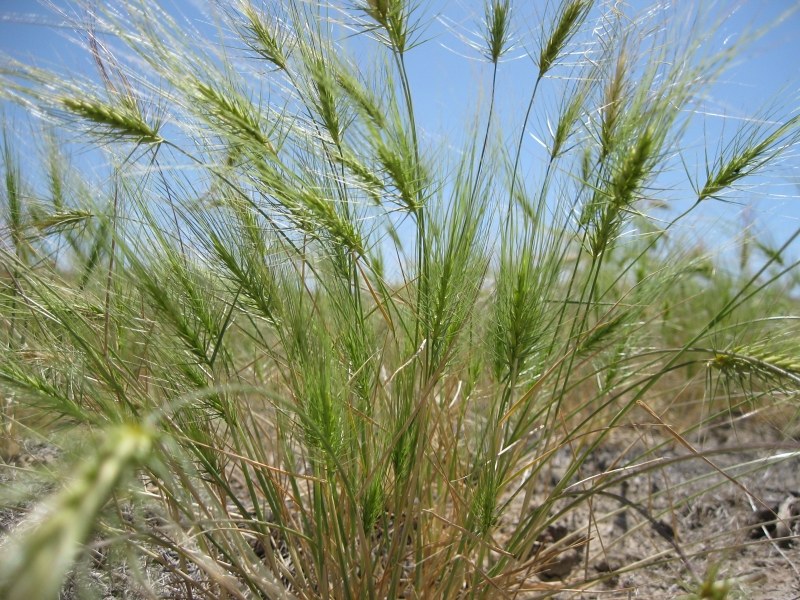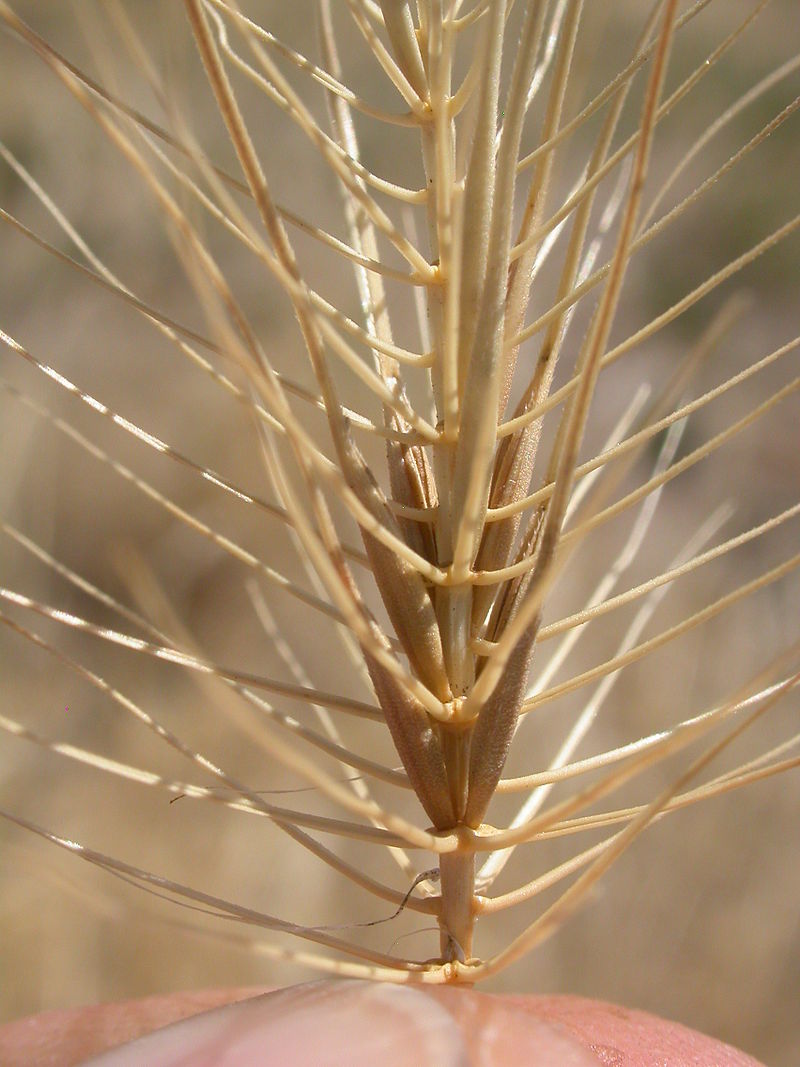Medusahead

Medusahead
(Taeniatherum caput-medusae)
Priority: - Prevent / EDRR
Tags: Agricultural | Terrestrial
Identification and Reproduction
Identification:
- Medusahead is an aggressive winter grass that reaches between 20 and 60 cm high.
- Stems are slim, hollow and weak, branching at the base.
- Inflorescences are found in spikes and will have long awns that resemble wires. When mature awns also dry and twist spreading in multiple directions, similar to Medusa's snakeheads.
Reproduction:
- This plant grows from roots but primarily relies on seed production.
- It grows via roots during the winter and early spring.
- Seeds are covered in small barb-like bristles. These help attach seeds to livestock, wildlife, humans, tools and vehicles.
- Germinating seeds are extremely drought resistant.
Habitat & Ecology
- Will rapidly take over sites that have been overgrazed, cultivated, burned by fire or recently disturbed.
- Prefers soils with high nutrient levels.
- Currently, is not found in BC but is present in Pend Orielle County in Washington.
Impacts
Social:
- Reduces pasture and crop land value and yields.
- Outcompetes desired crops on pasutre and rangelands.
- Unpalatable to livestock.
- Grazing capacity of infested land can be reduced by 80%.
Ecological:
- This aggressive grass easily outcompetes native species.
- Dead foliage pose as a wildfire hazard.
- Replaces native plants that provide important habitat for wildlife.
- Forms dense monotypic stands.
- Has at least invaded one million hectares in the western portion of USA and is estimated to be spreading at a rate of at least 12% a year.
Management
Prevention is a high priority for this plant.
- Be sure to clean vehicles, clothing, pets and agricultural, fire-fighting and construction equipment prior to leaving infested site.
- Seeds are easily attached to socks, pants and shoelaces so make sure they are removed before leaving.
- Refrain from moving livestock through infested areas.
- Monitor rangelands and know how to identify medusahead.
- Remove new plants as soon as possible. Hand-pull, hoe or dig up new infestations.
- Report this plant if you think you have seen it.
Resources
Download BC's Invasive Species Alert for Medusahead here.
For more details check out the Invasive Species Compendium datasheet on Taeniatherum caput-medusae (medusahead wildrye).
Header photo (Matt Lavin).




